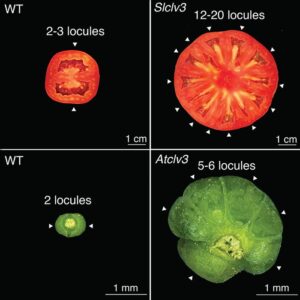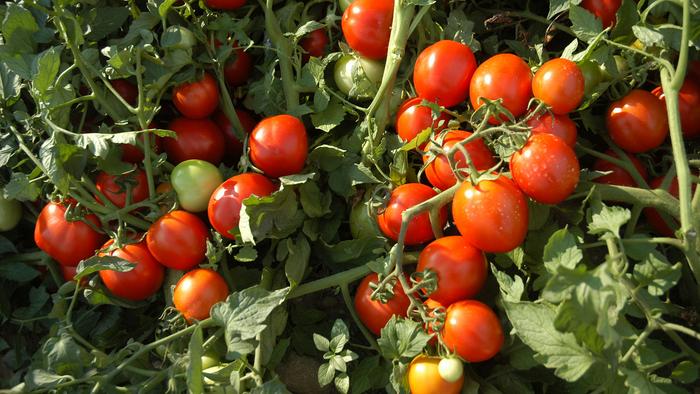As the human population continues to explode, the need for efficient crop growth also expands. While there have been great strides in plant genetics and modification, there is still much to be learned in understanding how crop traits, such as fruit growth, are regulated between plant species.
A research team at Cold Spring Harbor Laboratory, led by Zachary Lippmann, PhD, identified divergent regulatory systems for the same gene, CLAVATA3 (CLV3). This gene, which has been conserved for over 125 million years, is controlled differently in tomatoes and Arabidopsis.
This work is published in the paper, “Extreme restructuring of cis-regulatory regions controlling a deeply conserved plant stem cell regulator” in PLOS Genetics.
“A striking paradox is that genes with conserved protein sequence, function, and expression pattern over deep time often exhibit extremely divergent cis-regulatory sequences. It remains unclear how such drastic cis-regulatory evolution across species allows preservation of gene function, and to what extent these differences influence how cis-regulatory variation arising within species impacts phenotypic change,” write the scientists.
“Here, we investigated these questions using a plant stem cell regulator conserved in expression pattern and function over ~125 million years. Using in vivo genome editing in two distantly related models, Arabidopsis thaliana (Arabidopsis) and Solanum lycopersicum (tomato), we generated over 70 deletion alleles in the upstream and downstream regions of the stem cell repressor gene CLAVATA3 (CLV3) and compared their individual and combined effects on a shared phenotype, the number of carpels that make fruits.
“We found that sequences upstream of tomato CLV3 are highly sensitive to even small perturbations compared to its downstream region. In contrast, Arabidopsis CLV3 function is tolerant to severe disruptions both upstream and downstream of the coding sequence. Combining upstream and downstream deletions also revealed a different regulatory outcome. Whereas phenotypic enhancement from adding downstream mutations was predominantly weak and additive in tomato, mutating both regions of Arabidopsis CLV3 caused substantial and synergistic effects, demonstrating distinct distribution and redundancy of functional cis-regulatory sequences.
“Our results demonstrate remarkable malleability in cis-regulatory structural organization of a deeply conserved plant stem cell regulator and suggest that major reconfiguration of cis-regulatory sequence space is a common yet cryptic evolutionary force altering genotype-to-phenotype relationships from regulatory variation in conserved genes. Finally, our findings underscore the need for lineage-specific dissection of the spatial architecture of cis-regulation to effectively engineer trait variation from conserved productivity genes in crops,” the scientists wrote.
Creating mutants to study gene function
Using genome editing in both species, the researchers created over 70 mutant plants. They explored the regulatory regions up- and downstream of CLV3 to determine the effects of these regions on expression of this highly conserved gene. “CLV3 helps plants develop normally. If it wasn’t turned on at the exact time that it is, then plants would look very different. All the fruits would be ginormous and not ideal,” said Danielle Ciren, PhD, lead author of the study and recent doctoral graduate.

In tomatoes, modifications to regulatory regions at the beginning of CLV3 had a massive impact on fruit size, while Arabidopsis grew larger only when both upstream and downstream targets were disrupted. This suggests that at the time of evolutionary divergence of these plants, some 125 million years ago, there was some force pushing these regulatory changes.
“You can’t go back to the common ancestor because they don’t exist anymore. So it’s hard to say what was the original state and how have things been mixed up,” said Ciren. “The most simple explanation is that there’s a regulatory element that’s conserved in some capacity, and it’s been altered in subtle ways. It is a bit unexpected.”
In relation to crop growth, there’s no simple answer for simply turning a gene on or off. Timing is everything and consideration for fruit size and expected yield is important for sustainability in crop growth. “You have to balance growth and yield. If a plant has giant tomatoes but only two, is that as beneficial as a lower yield? There’s no simple solution. You’re always sacrificing something when you’re trying to get something improved,” concluded Ciren.


